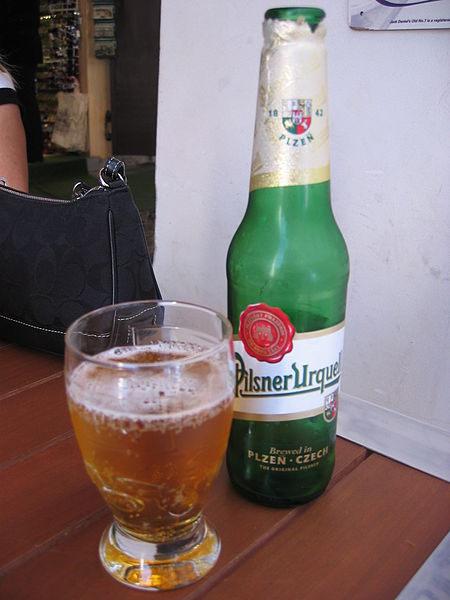Nick JD
Blah Blah Blah
- Joined
- 4/11/08
- Messages
- 7,322
- Reaction score
- 456
Line the colander with swiss voile that's been either boiled for a minute or two, or been soaked in starsan.
Pour into the fermenter until you start to see break material, then pour through the colander. Don't wait too long for it to drain - 5 minutes max.
The yoghurty stuff that first wants to tip into the fermenter is cold break - getting some of this in your brew doesn't affect the taste, and some would argue it should be in there. I've left it out and left it in and don't notice the difference.
The cottage cheesey stuff at the very bottom of the pot is hot break. This is essentially Barley Tofu. I've also left it in and left it out and I'm really not sure If I could tell the difference, but most would say to leave it out. The difference between cold and hot break is mostly fat, and you don't want fat in a beer, mainly because it might affect head retention and mouth feel.
Much of the "rules" about break material have been written by traditional brewing methods. Because cold break always ends up in the fermenter with people who rapidly cool wort, then it's "okay" because they have to live with it. Because traditional brewing methods can avoid hot break - they say "it's evil stuff!"
With this method you can avoid both, but I'm the last one to say you should. Your beer will be fine.
EDIT: you put hops in it, right?
Pour into the fermenter until you start to see break material, then pour through the colander. Don't wait too long for it to drain - 5 minutes max.
The yoghurty stuff that first wants to tip into the fermenter is cold break - getting some of this in your brew doesn't affect the taste, and some would argue it should be in there. I've left it out and left it in and don't notice the difference.
The cottage cheesey stuff at the very bottom of the pot is hot break. This is essentially Barley Tofu. I've also left it in and left it out and I'm really not sure If I could tell the difference, but most would say to leave it out. The difference between cold and hot break is mostly fat, and you don't want fat in a beer, mainly because it might affect head retention and mouth feel.
Much of the "rules" about break material have been written by traditional brewing methods. Because cold break always ends up in the fermenter with people who rapidly cool wort, then it's "okay" because they have to live with it. Because traditional brewing methods can avoid hot break - they say "it's evil stuff!"
With this method you can avoid both, but I'm the last one to say you should. Your beer will be fine.
EDIT: you put hops in it, right?





